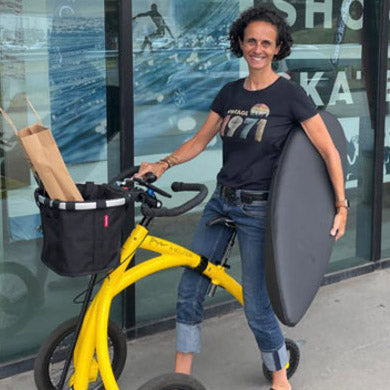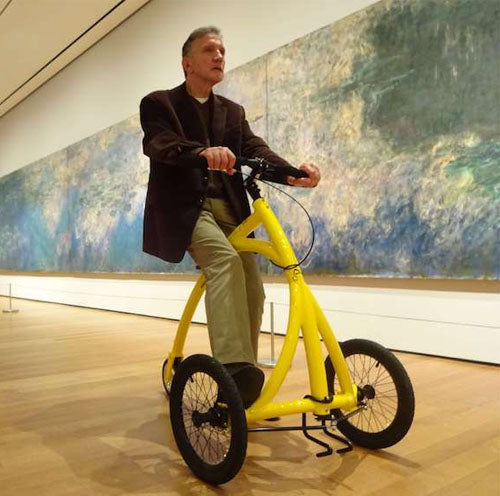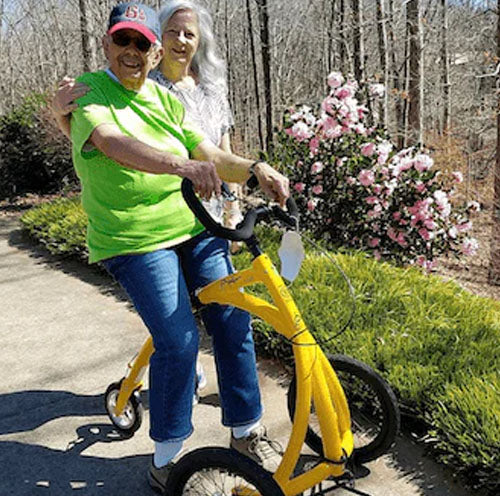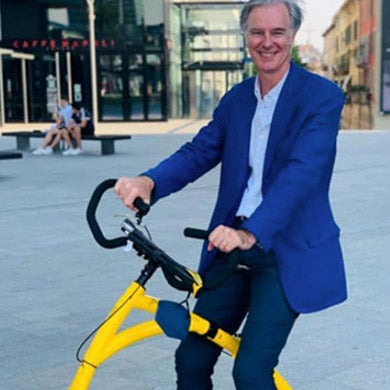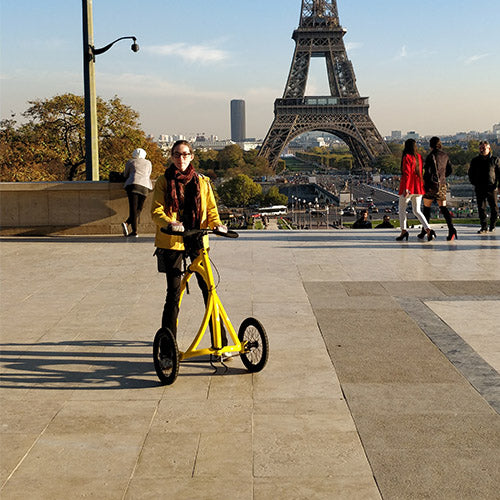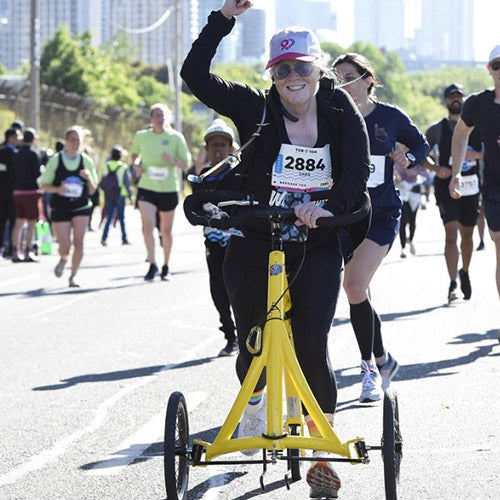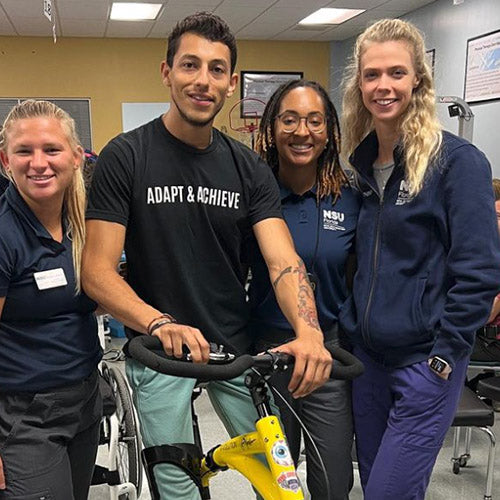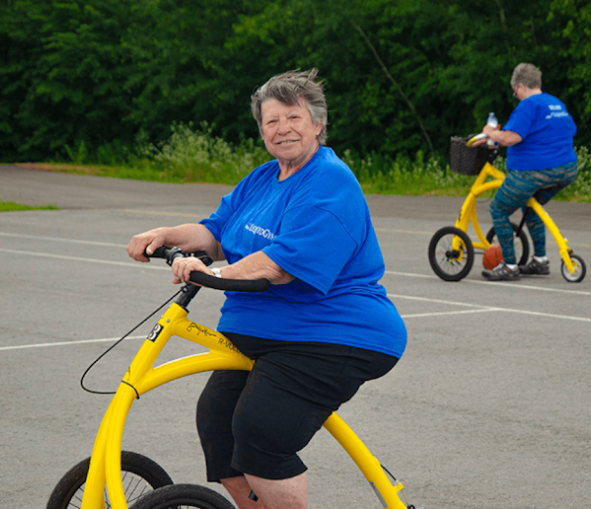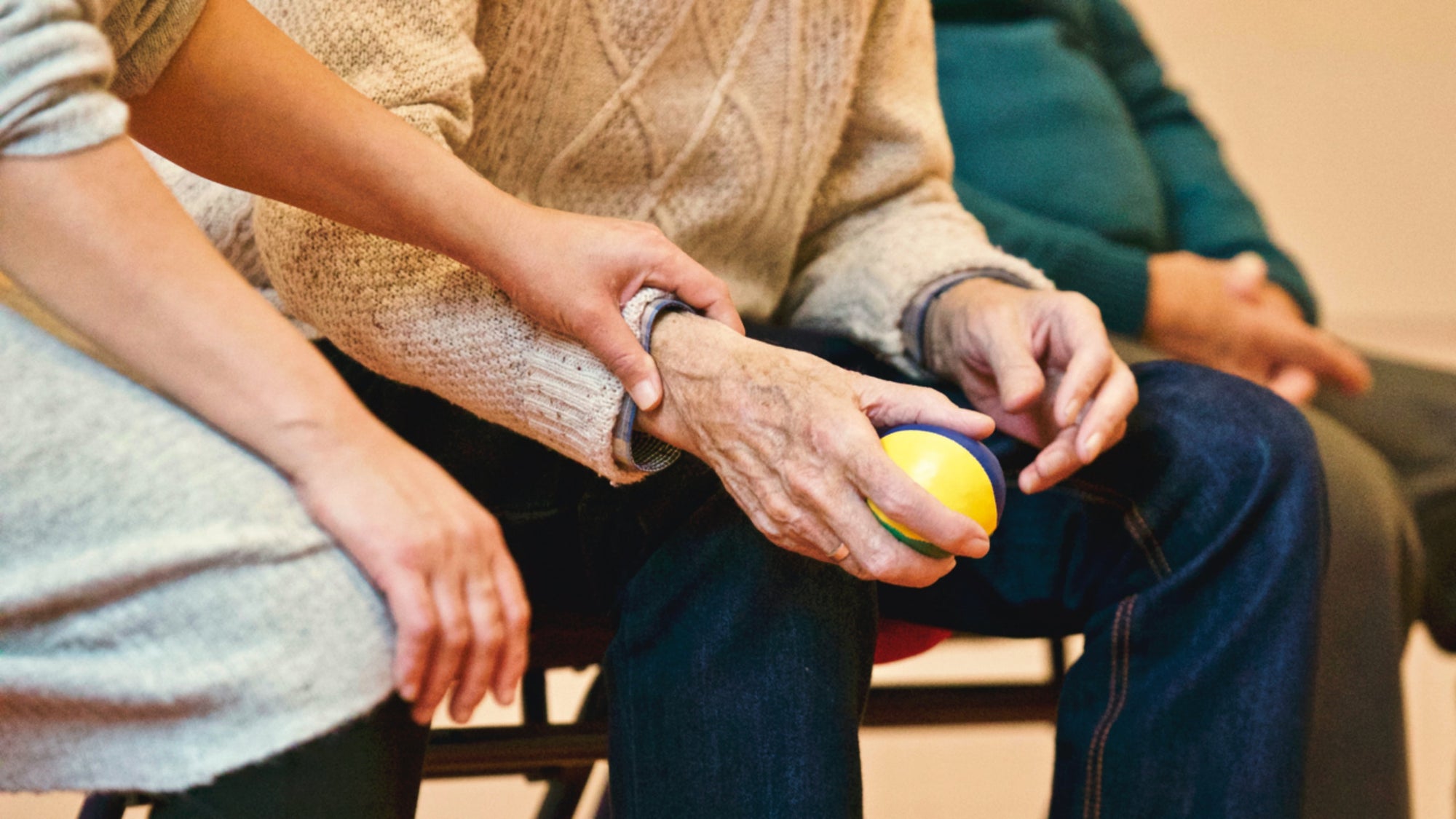Exercise is great for your physical, mental, and emotional health. It helps prevent a number of common illnesses, reduces stress, boosts mood, and is generally wonderful for your overall well-being. However, getting an adequate amount of exercise when your mobility is limited can be a challenge. Fortunately, there are a number of strategies and activities you can undertake to stay active, healthy, and happy, even with your mobility challenges.
Members of our community who were told they would never walk again have been able to take a few steps or walk across a room. Other people who had been homebound for years have been able to go for walks with their family again, and access outdoor spaces again. We don’t consider mobility issues to be a body with a problem, we focus instead on what we can still do, instead of what we’ve lost. If you’re facing mobility limitations, exercise can seem daunting, if not impossible. But with determination and patience, we believe you can get there.
How to start a new exercise routine with limited mobility
Talk to your doctor
Start by talking to your healthcare provider or physical therapist to get medical clearance, and to develop a program that will work with your specific needs.
Start small
No need to rush into things! If you’re just beginning to exercise again after a long hiatus, or with a new injury or illness, give yourself plenty of time to adapt. Start with 10-20 minutes per session, or even per day, so you don’t overdo it and burn out. Any exercise at all is better than none!
Set realistic goals
Setting both long-term goals and short-term goals is a great way to motivate yourself to keep at it, but also to make sure you don’t try to do too much, too quickly. So maybe your long-term goal is to walk a 5K. That’s a great plan to work towards! So then set yourself short-term goals, like walking across your living room, then to the end of your driveway, then the end of the block. Setting manageable goals is a great way to both build up your strength and capacity gradually, but more importantly to build your confidence so you don’t get discouraged.
Make exercise part of your daily routine
Just as we all know it’s hard to break a bad habit, it’s also hard to develop a good habit. In fact it takes most people about two months to form a new habit. Set aside time for exercise, ideally at the same time each day, and stay consistent. However, don’t be hard on yourself if you fall off the routine for a few days, or even a few weeks. Feeling like you’ve failed just because you took a break is a common reason people quit exercising entirely. Don’t consider it a failure, just start again when you’re ready and get back to your routine.
Make it social
Being part of a healthy, active community is an incredible motivator, and has really positive implications for your mental health. See if there’s a walking group you can join in your neighborhood for people with mobility challenges, or join a group fitness class for people with disabilities, such as aquafit.
If you’re mostly homebound, consider joining an online group fitness program. We also have an online instructional program called the Alinker Academy, which provides training on a variety of exercises you can do on our walking bike. Check out the How it Works page if you’re unsure what a walking bike is, and whether it could work for you.
What exercises should I do with limited mobility?
The specific exercises you can do will vary depending on your particular physical capabilities, which is why it’s important to talk to your doctor or physical therapist to ensure you develop a program that’s right for you. However, there are a few general guidelines that everyone should keep in mind.
Warm up and cool down!
No matter what kind of exercise you’re doing, it’s critical that you warm up and cool down afterwards to avoid potential injury, and get the most benefit from your workout. Start and finish your workout with light activities such as arm circles and shoulder rolls. Stretch lightly before your workout, and save the deeper stretches for cool down when your muscles are warmed up.
Mix it up
Broadly speaking, most exercises can be divided into three categories: cardio, strength, and flexibility. According to the US Department of Health and Human Services, all adults (regardless of disability) should get at least 150 minutes (2.5 hours) of aerobic activity per week. Any activity that gets your heart rate up is considered aerobic activity, so if you can’t walk yet or for very long periods, focus more on strength exercises that will increase your heart rate. Flexibility exercises, such as stretching and yoga, can help prevent injury and engage muscles that you may not be able to use for strength or cardio.
Don't overdo it
One of the most common things we hear from our community members when they’re starting out on their walking bike is that their head wants to do more than their body can. Listen to your body. If you’re experiencing consistent pain, lightheadedness, nausea, chest pain, etc., take a break or end your session for the day and resume later. Building up your strength and stamina takes time and a lot of patience, don’t push yourself further than your body wants to go, you’ll get there on your own time!
Have fun!
Exercise is challenging, but the short- and long-term benefits of maintaining an active lifestyle far outweigh the immediate frustrations of starting a new routine. There will always be good days and bad days, but try not to be too hard on yourself on the bad days, and focus on the long-term goal of living an active life, in community with other people.

